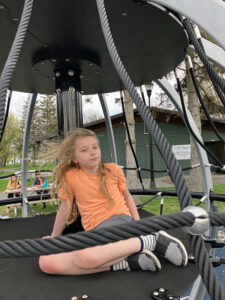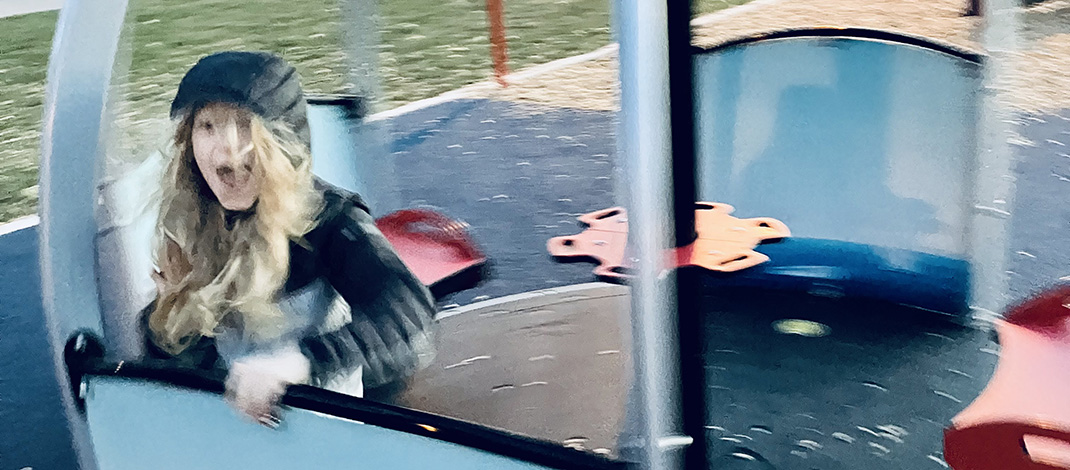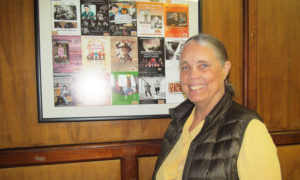Tim Nekritz nekritz@gmail.com

It’s easy to look at what makes a quality neighborhood in a purely statistical basis — average assessment, home sale prices, population density and so on.
But one thing you can’t easily put a price on is the quality of life, and a hidden gem here is the community playground.
Oswego is blessed with many playgrounds bringing a sense of live and livability to so many neighborhoods. I’m within easy walking distance of two of them — Shapiro Park and Kingsford Elementary — and looking at a map, I’m not alone in this benefit.
Moreover, during Mayor Billy Barlow’s administration, the city has invested heartily in these healthy features — and, even more admirably, in creating accessible spaces for people of all abilities.
Evolution of playgrounds
While playgrounds are ubiquitous in many communities, they didn’t become common until the 20th century. And the modern playgrounds we know are fairly recent in their development.
According to an article by Kaitlin O’Shea on the National Trust for Historic Preservation website, titled “How We Came to Play: The History of Playgrounds,” the idea of communal play spaces didn’t appear until the advent of “sand gardens” (large sandboxes) in Germany in the late 19th century. The first American playground traces to Boston in 1886, but they were far from common.
But the rapid urbanization that came with industrialization ramping up as the 20th century turned brought more attention to the need for “the concern for public welfare,” O’Shea notes. “Humanitarians saw playgrounds as the solution to cramped quarters, poor air quality and social isolation. This new concept could keep children off the dangerous streets and help them develop their physical health, good habits, socialization skills and the pleasure of being a child.”
A big step forward came with the 1906 development of the Playground Association of America, which promoted playgrounds as a concept for a healthy neighborhood and city, even if their vision was more regimented than the freeform ideal that exists today.
With the post-war economic and baby boom of the 1950s, playgrounds started becoming more recognizable to the modern visitor. If you remember playing on a rocket ship structure (reflecting the interest in the space race), whimsical animals or imaginative shapes, these came into popularity from around the 1950s to the 1970s, O’Shea explained. She adds that the 1970s and 1980s saw more standardized playgrounds — due to greater safety concerns — and the time since has seen continued evolution in design, safer and softer surfaces and more recently, accessibility.
Port City playgrounds
I used the extremely unscientific method of asking friends on Facebook about their favorite playgrounds in Oswego and their responses speak to both the variety and varied strengths of the play places.
Justin Dickerson of Oswego praised his neighborhood playground, Shapiro Park, as “quiet and in a nice neighborhood … it’s nice and simple, something for everyone.”
Chrissa Butler of Dewitt, who enjoyed playgrounds with her children in Oswego many years, said the city had “an exceptional system,” as “we used them all the time before I moved.” Butler said a favorite was Franklin Square–West Park, with “something for a variety of ages.”
Friends from the east side liked Hamilton Park and Oak Hill Park, which are a few blocks from each other and recently renovated. For Michele Smith of Oswego, those and other parks all offered something special.
“We frequent Oak Hill and Hamilton most often because we can walk there,” Smith said. “Hamilton is especially nice for younger kiddos because it has a smaller playground. Brietbeck’s new playground has so many new cool features. Kingsford is cool because it’s pirate-themed. Fitzhugh’s new playground is great, too.”
Kate Davis, now in Mexico but who has spent time in Oswego, also liked Shapiro Park, “especially when mine were little,” she said. “Quiet, there’s some tree shade for parents, you can see the whole thing at once.”
The wooden playground in West Park is more of a current favorite for Davis’ kids, but the new splash pad in Breitbeck is also appealing.
That water-themed splash park — featuring 17 spraying and playing features including a large water bucket — opened in June 2021 next to Breitbeck Park. The $400,000 project, partially funded by a state grant, also includes a nine-hole putt-putt course and a snack bar (one of my kid’s favorite parts). The first summer found it packed with families, especially on hotter days.
Building accessibility
Right across the street, the renovated Breitbeck Park playground reopened last September and in its first weeks was mobbed with kids trying out its two large spinning apparatuses, ziplines, features representing local nautical landmarks and more traditional playground features. The $550,000 playground, mostly funded by a state grant, replaced an aging playplace, and one zipline and a merry-go-round-like spinner are among the features that accommodate those in wheelchairs and others with disabilities.
This development followed the 2019 opening of Hamilton Park, the first playground where accessibility was a prominent feature.
“We’ve worked these last three years to make Oswego a more inclusive community and I believe we need to continue these efforts, making Oswego a better place for all,” Mayor Barlow said at the time. “Representing and advocating for those with disabilities in our community is a cause I am personally passionate about and I intend to combine this passion with our efforts to improve our parks, making Oswego more unique than other nearby communities and being sure to consider all Oswego residents when making important decisions.”
With the rise of more modern plastic playgrounds, the colossal wooden playground in West Park–Franklin Square continues to attract a large crowd on nice days. The large almost castle-like structure includes tunnels, slides, climbing bars and more. A decade ago, a cooperative effort of the Oswego Renaissance Association, the city’s Department of Public Works, SUNY Oswego students and local residents took part in a “Playground Restoration” that included repairs, restaining, weeding and more. It might not be new and shiny, but it’s a hub for kids to come together for imaginative play.
You can also find playgrounds at the city’s three elementary schools — Kingsford, Fitzhugh and Leighton — and at Fort Ontario. All sport different themes and features, but also draw in kids from the neighborhood and beyond.
“Playgrounds are places that speak to everyone,” O’Shea wrote. “The value of a playground lies in place. Beginning as healthy respites for urban dwellers and expanding to be safe places for children to gather with adults, playgrounds have continued to host community events, sporting games, and outings for all ages. Children enjoy carefree days, and adults remember those carefree days.”
And in Oswego, you can almost pick a different playground every day of the week, and the children will find a way to make every outing enjoyable.




